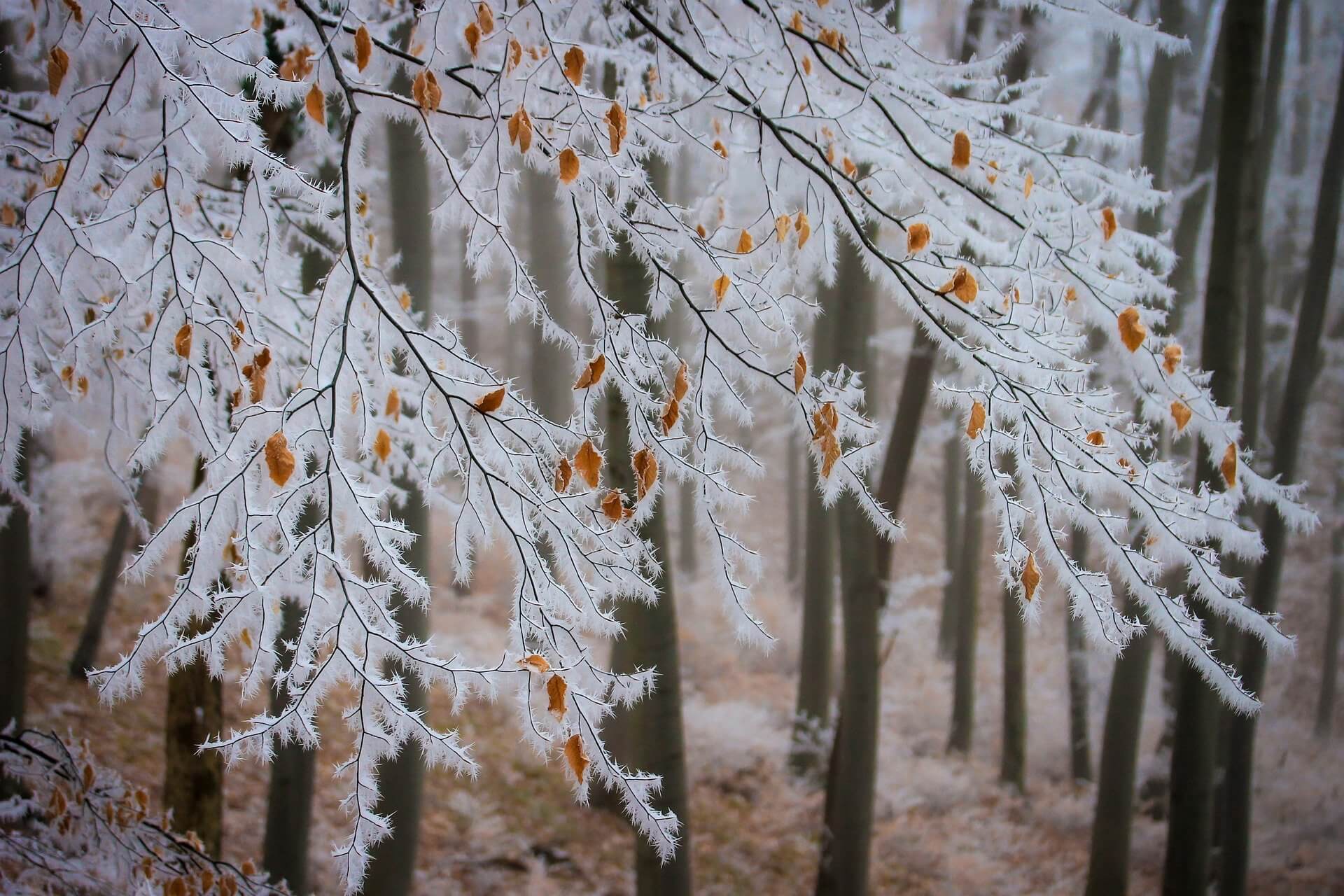Winter can be a stressful time for trees. The extreme weather can cause all sorts of issues and it’s important to be prepared for them and know how to react. The more you know about winter tree care issues, the better able you will be to keep your trees healthy year-round.
Animal Damage
While some animals hibernate during winter, there are still plenty of animals that are active. And those active animals need to find a suitable habitat and most importantly, a food source.
During winter, food sources are naturally scarce for animals. There are no nuts available and most plants no longer have seeds or berries. While most animals are adaptable, when there is heavy snow on the ground, animals can have a hard time accessing the remaining leaves and grasses.
The result is that many animals, including mice and rabbits, will start feeding on bark. The resulting damage that is done is called girdling. Trees need their bark to protect the inner wood, especially in winter when there are extreme temperatures. Too much girdling and a tree could possibly be weakened beyond repair.
Thankfully, there is an easy to way to prevent animal damage to your tree. Before heavy snows, wrap your tree trunks with metal mesh. This will deter the animals from eating the bark.
Frost Heaving
When temperatures plummet, and especially when there is little moisture in the air, frost occurs. When this happens, the dirt around your trees actually moves. Roots in the ground are pushed upwards, which is known as frost heaving, and has two major consequences.
The first is a practical result. Trees that grow next to pathways and sidewalks can have their roots pushed up so that they move the surface above them. This damages the pathways and sidewalks. Not only will you have to remedy the situation in the future, but in the meantime this is a major tripping hazard.
The second consequence refers to the tree roots themselves. As the roots are pushed upwards, they undergo a lot of strain. They can end up breaking or splintering, thus depriving the tree of important nutrients.
The best way to prevent frost heaving is by adding a thick layer of mulch around the base of the tree. Mulch is a great insulator and will protect the soil below from frost. Just don’t place mulch right next to the tree trunk as it can lead to mold growth. At Nature’s Shade Tree Care, we provide mulch deliveries.
Sunscald
While humans need to be really cautious about the sun’s rays in summer, trees need to be extra cautious in winter. Sunscald is similar to a sunburn, but for trees. In winter months, clear skies and bright sunshine can actually be quite warm. However, when this heat is suddenly removed, as thick clouds develop, a tree can’t regulate itself.
As a result, the inner wood of a tree can develop thick cracks in it. The tree’s cells that were activated by the heat aren’t able to adjust quickly enough to the absence of it, which is when damage occurs.
The only positive with this winter tree care issue is that sunscald is more common in southern locations. If you live in a southern region, be sure to wrap delicate trees to give them an extra layer from all the elements.
Snow and Ice Breakage
Winter storms are one of the major causes of winter tree care issues. Snow, ice, and wind can all create high levels of damage. While some issues can wait for spring, many of them need to be dealt with right away.
Large amounts of snow that accumulate quickly can be too much for tree branches to bear. While trees naturally bend under pressure, even they have their limits. While you certainly don’t need to shake your trees every time it snows, as this actually provides a layer of insulation, you might want to remove the snow if it is a large amount.
In some climate areas, freezing rain and ice storms are an issue. In this case, the temperature starts out above zero with rain falling, only to quickly drop to below freezing. The result is trees encased in ice. If this lasts for more than a few days, the ice can do real damage.
The extra weight of ice surrounding the whole tree can cause branches to break and limbs to fall. Furthermore, ice can cut off nutrient supplies to your tree, causing it to become quite weak.
Unfortunately, when an ice storm happens, there isn’t a lot you can do. Trying to chip away at the ice can cause more damage to the bark. It may take some time, but you have to just let the ice melt away naturally and hope there wasn’t too much damage caused. Just make sure you perform a thorough inspection after an ice storm to see if any branches are at risk of falling down.
If you live in a region that regularly has ice storms, there is a way to prepare for them. Tie branches of trees together in a loose fashion. You can use coated twine or strips of fabric. One spring comes around, you can untie the fabric.
Tree Drought
While we often think of massive snowdrifts in winter, the reality is that many regions experience a cold, dry winter. This is especially true at the beginning of winter. When the ground freezes, the water source of many trees also dries up. As a result, trees actually enter a state of starvation. If this lasts too long, permanent damage can be done.
Be sure to monitor your weather in winter. If there has been no precipitation for a few weeks, give your trees a good drink of water. They need a lot, in small amounts. You may have to water your tree every hour for a day or two in order for the roots to properly reach the ground water.


